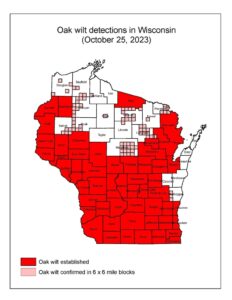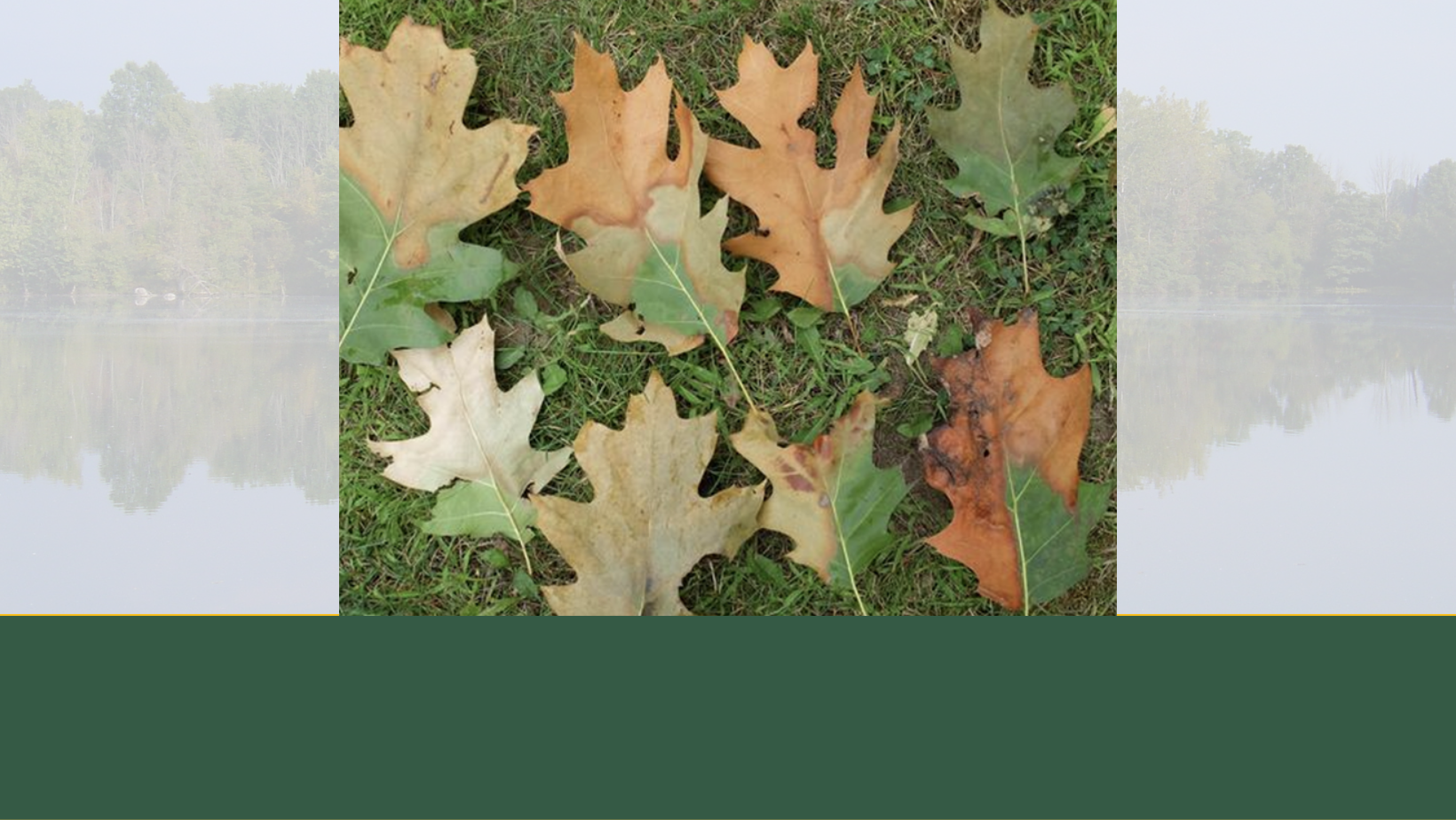Oak Wilt
The primary cause of Oak Wilt is a fungus known as Bretziella fagacearum. This fungus invades the water-conducting vessels of oaks, eventually killing infected trees by cutting off their water supply. While the oak wilt pathogen can infect all oak species, the red oak group die about two months after infections, sometimes completely wilting and dropping their leaves in less than two weeks. White oaks have a different vascular system and are able to contain the infection to a single limb or area of the tree and prevent its spread, living up to 20 years after infection. The symptoms of Oak Wilt vary depending on the species of oak. In red oaks, the leaves often develop a bronzing coloration, starting at the tips and edges and moving inward. The leaves then wilt and fall off the tree. In white oaks, the symptoms are less severe and progress more slowly. The leaves may show some discoloration and wilting, but the tree often survives for many years after infection. Field identification of oak wilt can be challenging and often requires laboratory testing for confirmation. Samples are collected from the bark of the oak, including the white vascular wood and sent to the WDNR Labs for testing.

Oak Wilt spreads via two main pathways: through root grafts and via insect transmission. Root graft transport happens when the roots of an infected tree come into contact with the roots of an infected tree, allowing fungus to spread tree to tree until the root system is broken. Insects, primarily sap beetles, also spread the fungus. The fungal patches on the oak attract insects, and when they move from tree-to-tree landing on wounded oaks, they take the fungus with them. You can help slow the spread of Oak Wilt by not trimming or wounding oaks in the months of April-July when the sap beetles are most active. Monitoring your trees for wounds after storms and painting any open gouges with Treekote or another thick paint will also prevent the spread. If you had a tree die of Oak Wilt on your property, fungal patches can remain active on firewood and downed logs for up to a year. This is why it is important to tarp infected wood for a growing season before using it.

Treatment Recommendations include:
- Minimizing pruning: Pruning can create wounds that attract sap beetles, which can spread the oak wilt fungus. Therefore, it’s recommended to minimize pruning during the active growing season. Prune in the winter months.
- Use of fungicides: Fungicides such as propiconazole can be effective in preventing Oak Wilt on select trees. This would need to be repeated every two years but would protect trees that are not yet infected in a high-risk area.
- Professional removal of infected trees and all oaks inside of an at-risk pocket. Even with infected trees being removed, the infection can spread via the root system to the next oak. This means all trees at risk of being grafted to the infected tree need to be cut and treated with herbicide to kill the root system.
To discuss oak wilt diagnosis and treatment, contact our environmental specialists at [email protected]
Dani DeCloux – Environmental Operations Manager







